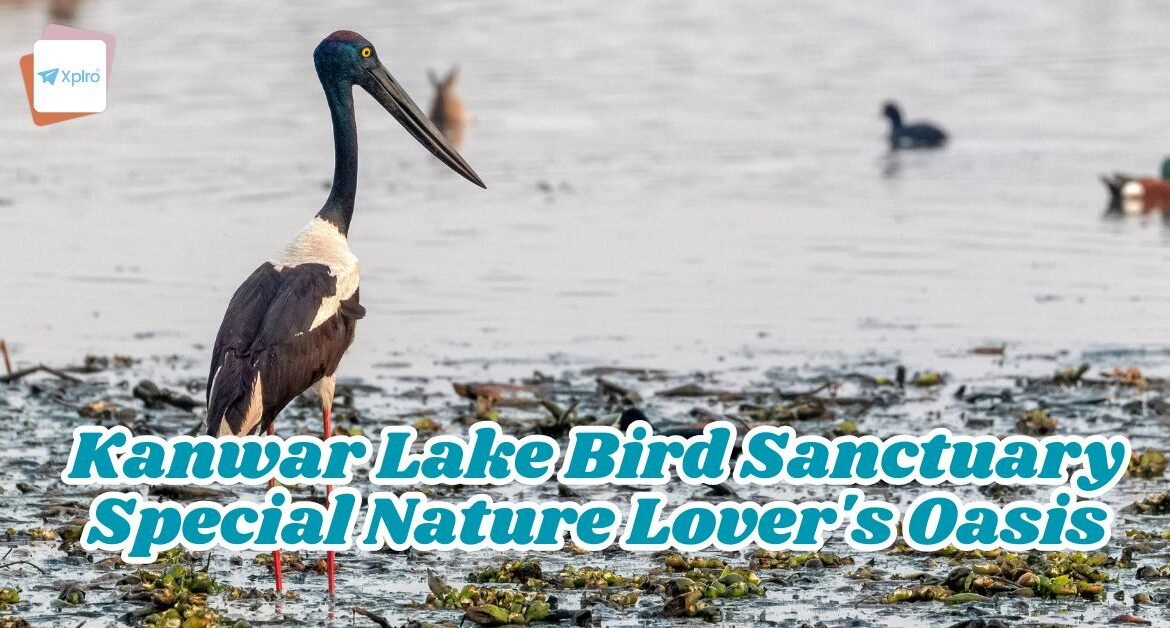Kanwar Lake Bird Sanctuary, also known as Kabartal, is Bihar’s hidden gem for nature enthusiasts and birdwatchers. Located in Begusarai district, this wetland is the largest freshwater oxbow lake in Asia, covering over 67.5 km². It is a crucial stopover along the Central Asian Flyway, hosting more than 220 bird species, including 58 migratory birds such as the critically endangered White-rumped Vulture and endangered Sociable Lapwing.
Visiting Kanwar Lake Bird Sanctuary felt like stepping into a peaceful world far away from city noise. The serene views of the lake, the quiet marshes, and the lush greenery instantly slowed everything down. As I walked along the wetlands, I spotted several rare and migratory birds in their natural habitat—moments that were perfect for photography and simple nature watching. The calmness of the place and the soft sounds of the birds made the whole experience unforgettable.
What impressed me even more was learning how important this lake is for the region. It helps recharge groundwater, supports local farming, and is home to more than 50 freshwater fish species. No wonder Kanwar Lake was declared Bihar’s first Ramsar site in 2020—a well-deserved recognition for a wetland of global ecological importance.
I visited during the migratory season, between October and March, and that’s truly the best time to experience the sanctuary. The lake becomes alive with colorful birds, and every turn on the trail offers something new to admire.
Reaching the sanctuary is easy—whether you come by road, rail, or air—which makes it suitable for both a short day trip or a slow, relaxing nature getaway. Its mix of rich biodiversity, scenic beauty, and complete tranquility makes it one of those places in Bihar you must visit at least once.
If you love bird watching, photography, or just being close to nature, Kanwar Lake Bird Sanctuary will leave you with memories you’ll want to revisit again and again. My time there reminded me how important these ecosystems are—not just for wildlife, but also for local communities and for anyone seeking a peaceful connection with nature.
Updated 2025
How to reach:
| Mode of Transport | Details | Travel Tips |
|---|---|---|
| By Air | Nearest airport: Jay Prakash Narayan International Airport, Patna (approx. 120 km away). | Take a taxi or bus to Begusarai; travel time varies with traffic. |
| By Train | Begusarai Railway Station connects to Patna, Delhi, Kolkata, and Mumbai. | Use taxis or auto-rickshaws from the station to reach the sanctuary. |
| By Road | Connected via National Highway 31, linking Patna, Muzaffarpur, and Bhagalpur. | Choose buses, taxis, or private vehicles for a comfortable journey. |
| Local Transport | Taxis and auto-rickshaws are available from Begusarai city center. | Rent bicycles or motorcycles for flexible, eco-friendly exploration. |
Best time to visit:
| Season | Highlights | Birdwatching Experience |
|---|---|---|
| Winter Wonderland (November to February) | Peak birding season with cool, pleasant weather. Migratory birds like ducks, geese, cranes, and waders arrive. | Ideal for photography and spotting rare species in vibrant wetland habitats. |
| Post-Monsoon Paradise (September to October) | Lush greenery after monsoon rains. Resident birds are highly active. | Great for observing natural behaviors and enjoying scenic landscapes. |
| Summer Season (March to June) | Hot and humid; not ideal for long excursions. Early mornings and evenings offer limited sightings. | Best suited for experienced birders seeking specific resident species. |
Updated November 2025: New entry fees, boating, bird sightings + photos
Attractions:
Kanwar Lake:
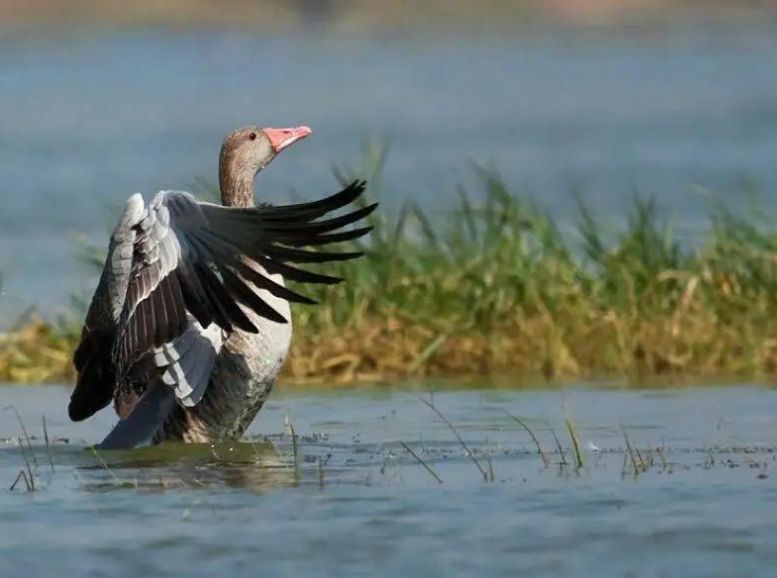
For me, the real highlight of the sanctuary was Kanwar Lake—Asia’s largest freshwater oxbow lake. Standing beside it, I was honestly amazed by how vast and calm it looked. This huge stretch of water becomes a lifeline for thousands of migratory birds, and watching them arrive and settle across the lake was one of the most peaceful experiences of my trip.
The lake is surrounded by lush vegetation and aquatic plants, which makes the whole area feel untouched and beautifully natural. As I walked around, I kept noticing how alive the ecosystem is—fish darting in the water, amphibians along the edges, and so many unique plant species adding to the sanctuary’s charm.
If you visit, I highly recommend taking a boat ride. Floating across the lake gives you a completely different perspective—you get even closer to the birds, and the calmness of the water feels almost therapeutic. Even if you don’t get on a boat, simply sitting by the shore and taking in the scenery is enough to make you feel connected to this incredible wetland paradise.
Avian Diversity:
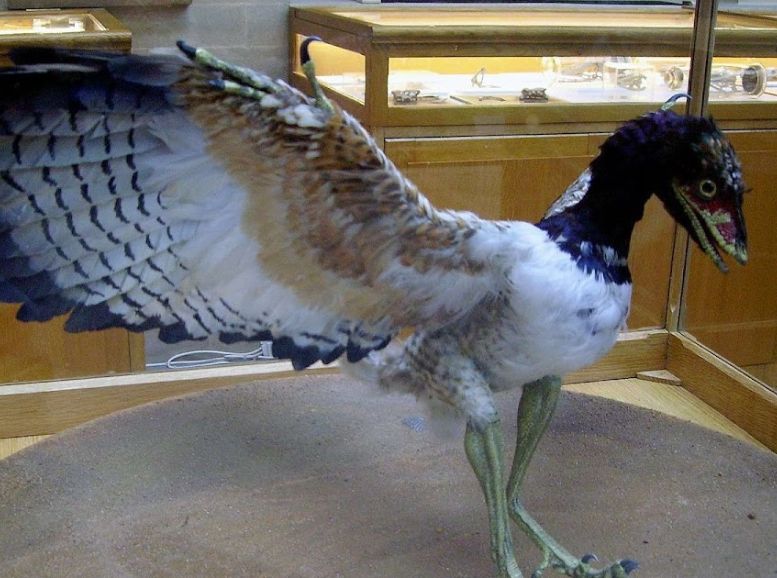
When I visited Kanwar Lake Bird Sanctuary, it felt like the whole place had come alive in a burst of wings and colors. Everywhere I looked, there was movement—graceful birds taking flight, splashes in the shallows, and calls echoing across the wetlands. It’s easy to see why bird lovers from all over are drawn here; the diversity is unbelievable.
The sanctuary is a true refuge for both migratory and resident birds. I remember watching elegant cranes glide across the sky while storks stood tall nearby, and herons quietly searched for food along the water’s edge. The ducks were the most eye-catching—bright, colorful, and constantly on the move, painting the lake with their vibrant presence.
I went during winter, and that’s when the sanctuary really transforms. The number of migratory birds increases so much that it almost feels like you’ve stepped into a huge, bustling bird city. I spent hours just observing them—each species with its own behavior, calls, and charm.
Birdwatching Towers:
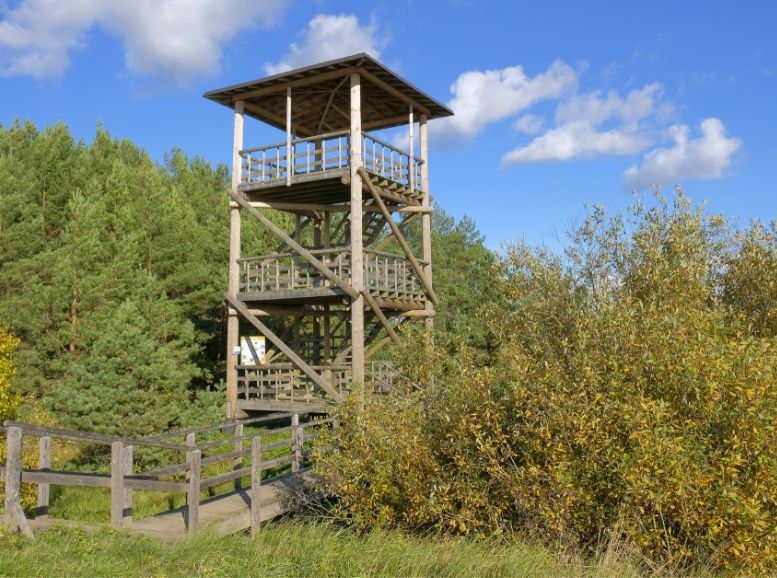
One of the things I loved most about Kanwar Lake Bird Sanctuary was the series of sturdy birdwatching towers scattered across the landscape. Standing on these elevated platforms felt like stepping into a different world. From the top, I could see the entire lake stretching out in front of me, along with the marshes and all the hidden corners where the birds gather.
Looking down from the tower, I watched some birds foraging quietly in the shallow waters while others traced smooth, graceful arcs across the sky. The view made me feel completely immersed in the sanctuary—almost as if I was part of the ecosystem for a moment. These towers truly enhance the whole experience, giving you a deeper connection to nature and a front-row seat to the behaviour of the birds in their natural habitat.
Boating:
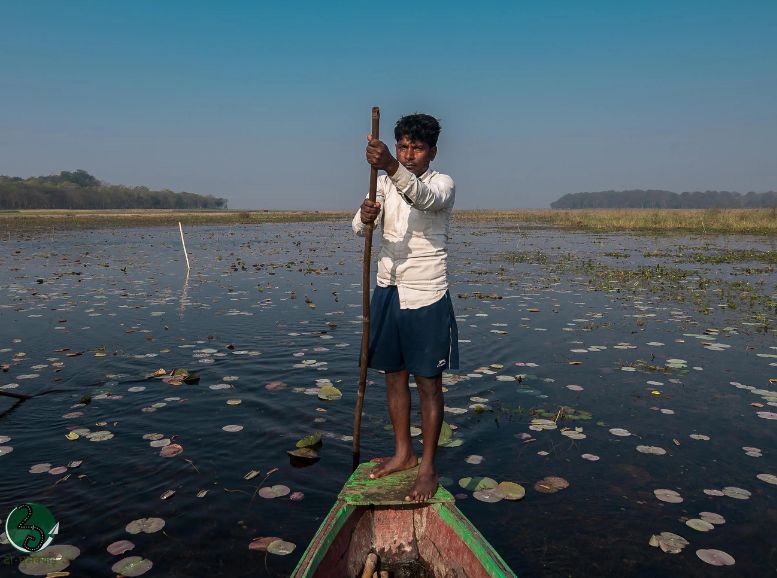
One of my favorite moments at Kanwar Lake was taking a slow, peaceful boat ride across its glassy surface. As the boat drifted forward, the calmness of the lake instantly relaxed me. The shores were lined with tall reeds and lush greenery, making the whole scene feel untouched and incredibly serene. I kept scanning the edges of the lake, and every few minutes, a new bird appeared—some perched proudly on the reeds, others taking flight right above me. Being out on the water gave me a completely different perspective of the sanctuary. It was the perfect way to enjoy birdwatching up close and capture some truly memorable moments.
Why Kanwar Lake Matters
My Insights on the Unique Geography & Hydrology
During my visit, I was fascinated to learn that Kanwar Lake is actually a residual oxbow lake, shaped over centuries by the winding path of the Burhi Gandak River, which itself is a tributary of the Ganga. Walking around the area, I could clearly see how the landscape changes with the seasons. Locals told me that during the monsoon, the lake swells up to about 1.5 meters deep, while in the dry months, many sections shrink or dry out completely.
What struck me most was how important this lake is for the region. It acts as a natural flood control system, absorbing excess water from the surrounding plains. The entire sanctuary covers nearly 2,620 hectares of wetland, forming part of a much larger floodplain ecosystem. Seeing it in person helped me understand how such wetlands quietly protect both wildlife and nearby communities.
Biodiversity & Wildlife: What I Observed and Learned
The sanctuary is incredibly rich in life. According to official records—and from what I experienced firsthand—Kanwar Lake supports over 165 plant species and nearly 394 animal species. But the real highlight is the birdlife. An impressive 221 species of birds have been recorded here, both resident and migratory.
I even got the chance to spot some of the critically endangered vultures the area is known for, including the red-headed vulture, white-rumped vulture, and Indian vulture. Learning that these rare species still survive here gave me a new appreciation for the sanctuary’s importance.
Kanwar Lake is also a major stopover for migratory birds traveling along the Central Asian Flyway. Birdwatchers often talk about the sightings of rare waterbirds like the sociable lapwing and Baer’s pochard, and hearing those stories made me even more excited about what this region holds.
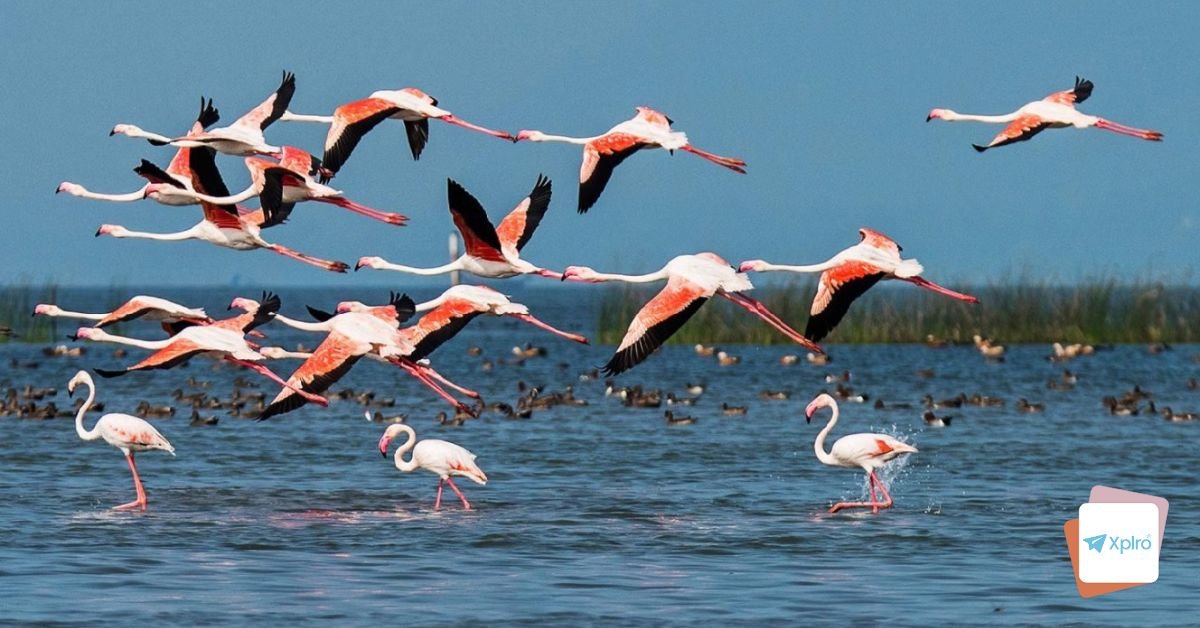
Conservation Challenges: What’s Really Happening
While the sanctuary is breathtaking, it’s also clear that Kanwar Lake is facing serious challenges. Locals and conservation volunteers shared how large sections of the lake dry up during harsh summers, which has contributed to a decline in bird numbers over the years.
The more I asked around, the more concerns I heard:
- Encroachment into wetland areas
- Siltation reducing water depth
- Excessive water extraction
- Damaged or blocked natural water channels
These issues threaten the lake’s long-term survival. What’s disappointing is that experts have been pushing for an Ecological Restoration Plan for years, but as of 2025, it still hasn’t been implemented. Seeing the lake’s beauty alongside its struggles makes you realize how urgently this ecosystem needs protection.
What Makes Kanwar Lake Special
- Threatened Species: Some critically endangered species live there, such as several vulture species (red-headed vulture, Indian vulture, white-rumped vulture), Baer’s pochard, and sociable lapwing.
- Size & Type: It’s Asia’s largest freshwater oxbow lake. It spans around 2,620 hectares in the Indo-Gangetic plains.
- Ecological Importance: The lake floods during monsoon (up to ~1.5 m depth), which helps with flood control for nearby areas. During dry seasons, some areas turn marshy or are used for agriculture.
- Biodiversity: There are around 165 plant species and 394 animal species, including 221 bird species. Over 50 fish species have been recorded. It is also on the Central Asian Flyway, serving as a rest stop for many migratory waterbirds.
Local Experiences at Kanwar Lake Bird Sanctuary
Unwinding on tranquil waters:
One of the most peaceful things I did here was glide across Kanwar Lake on a slow boat ride. The stillness of the water and the wide, open views of the wetlands instantly calmed me. I kept spotting birds along the shoreline—some taking flight right next to the boat, others perched quietly in the reeds.
Exploring hidden corners:
I also spent time walking through the sanctuary’s nature trails, which are well-marked and easy to follow. Each path took me through different habitats, all buzzing with life. I saw colorful butterflies, plenty of bird species, and even a couple of small mammals peeking out from the bushes. The informative boards along the trail helped me understand the ecological story of the place.
Climbing for the best views:
The birdwatching towers were another highlight. I climbed a few of them, and the panoramic views from the top were incredible. Watching birds move across the landscape from that height gave me a whole new appreciation for how they interact with the wetland.
Capturing memories:
If you love photography, this place is a goldmine. Everywhere I turned, there was something worth capturing—unique birds, lush greenery, reflections on the water, and the peaceful charm of the wetlands. I left with so many shots I’m proud of.
Learning more about the ecosystem:
I also visited the interpretation center, where I learned about the sanctuary’s diverse birdlife and why wetlands like Kanwar Lake are so important. It added a lot of depth to my overall experience.
Spotting more than just birds:
Beyond the birdlife, I kept an eye out for turtles, frogs, and other small creatures that call this sanctuary home. It’s amazing how much life thrives here once you start noticing the small details.
Connecting with the locals:
During my visit, I got a chance to talk to a few people from the nearby villages. Hearing about their traditional lifestyle and their connection to the lake made my trip feel even more meaningful.
Enjoying local flavors:
After exploring, I stopped by a small eatery near the sanctuary and tried some regional dishes. The food was simple, fresh, and absolutely delicious—perfect after a long day outdoors.
Giving back:
If you’re interested, the sanctuary often has eco-friendly activities like clean-up drives or tree-planting programs. Joining one is a great way to support conservation efforts. I found it genuinely fulfilling.
Joining guided activities:
There are also birdwatching competitions and guided tours organized by local conservation groups. Participating in one added a fun, educational touch to my visit and helped me sharpen my bird-spotting skills.
Travel tips:
- Know Your Target: Before you embark, do some research! Familiarize yourself with the bird species you might encounter based on the season of your visit. This will enhance your birding experience.
- Dress for Success: Pack comfortable clothing and sturdy shoes for navigating the sanctuary’s diverse terrain. Sun protection is key – bring a hat, sunglasses, and sunscreen.
- Capture the Moment: Don’t forget your binoculars for distant observations and a camera to immortalize your sightings. Pack extra batteries and memory cards.
- Fuel Up for Fun: Pack plenty of water and light snacks like nuts, granola bars, and fruits to stay hydrated and energized throughout your exploration.
- Respect the Sanctuary: Remember, you’re a guest in the birds’ home. Maintain a safe distance from wildlife and avoid disturbing nesting sites or sensitive areas. Refrain from feeding or approaching wild animals.
- Be a Responsible Visitor: Familiarize yourself with the sanctuary’s rules regarding designated trails, restricted areas, and prohibited activities. Follow signage and respect instructions from staff.
- Leave No Trace: Help keep the sanctuary pristine by disposing of waste responsibly. Carry a small trash bag and use designated bins outside the sanctuary.
- Quiet Enjoyment: Keep noise levels low to minimize disruption for wildlife and fellow visitors. Silence your phone and avoid loud music or activities.
Conclusion
Unfolding amidst Begusarai‘s verdant landscapes, Kanwar Lake Bird Sanctuary is a haven for nature lovers. This vast sanctuary pulsates with life, offering refuge to a dazzling array of migratory and resident birds. Immerse yourself in thrilling birdwatching expeditions, serene boat rides, or tranquil nature walks. The sanctuary’s interpretation center sheds light on the crucial role of wetland conservation and the ecological significance of these avian habitats. Explore the scenic landscapes, encounter vibrant wildlife, and be reminded of the importance of preserving this natural paradise for generations to come.
Kanwar Lake Bird Sanctuary serves as a sanctuary not just for birds, but for the soul, offering moments of tranquility and connection with nature. Whether you’re a seasoned birder or simply seeking solace, Kanwar Lake beckons with its timeless beauty. Plan your unforgettable exploration with Xplro.com.
FAQs
1. Where is Kanwar Lake Bird Sanctuary located?
- Kanwar Lake Bird Sanctuary, also known as Kabar Taal, is located in Begusarai district, Bihar, India. It lies about 22 km northwest of Begusarai town and is easily accessible by road via NH-31.
2. Why is Kanwar Lake Bird Sanctuary famous?
- Kanwar Lake is famous for being Asia’s largest freshwater oxbow lake and a Ramsar Wetland Site. It attracts hundreds of resident and migratory bird species, making it one of India’s top destinations for birdwatching and eco-tourism.
3. What is the best time to visit Kanwar Lake Bird Sanctuary?
- The best time to visit is from November to March, when migratory birds arrive and water levels are ideal for boating and birdwatching.
4. How can I reach Kanwar Lake Bird Sanctuary?
- You can reach Kanwar Lake via Begusarai Railway Station, which is the nearest railhead. The closest airport is Patna (Lok Nayak Jayaprakash Airport), about 125 km away. From Begusarai, taxis or local buses are available.
5. What types of birds are found in Kanwar Lake?
- Over 221 species of birds have been recorded, including Painted Storks, Openbill Storks, Egrets, Herons, Spoonbills, Red-headed Vultures, Baer’s Pochard, and Sociable Lapwings. Many are migratory species visiting from Central Asia and Siberia.
6. Is Kanwar Lake Bird Sanctuary open to tourists?
- Yes, the sanctuary is open to visitors year-round, though winter months (November to March) are the most rewarding for birdwatchers.
7. What is the entry fee for Kanwar Lake Bird Sanctuary?
- Currently, entry is free or minimal depending on local administration updates. It’s advisable to check with the Begusarai Forest Division Office for any latest visitor guidelines or fees.
8. What is the significance of Kanwar Lake as a Ramsar Site?
- Being a Ramsar Wetland Site, Kanwar Lake is recognized internationally for its ecological importance. It supports rare and endangered bird species, maintains regional hydrology, and acts as a natural flood-control system.
9. What is an oxbow lake and how is Kanwar Lake formed?
- An oxbow lake forms when a river’s meandering loop gets cut off, leaving a crescent-shaped waterbody. Kanwar Lake was created by the changing course of the Burhi Gandak River, a tributary of the Ganga.
10. How large is Kanwar Lake Bird Sanctuary?
- The sanctuary covers around 67.5 square kilometers (6,740 hectares), making it Asia’s largest freshwater oxbow lake.
11. What wildlife can be seen apart from birds?
- Besides birds, the lake supports fish, amphibians, reptiles, and small mammals such as otters and jackals. It’s also rich in aquatic vegetation and micro-organisms vital for the food web.
12. What are the main threats to Kanwar Lake Bird Sanctuary?
- Major threats include encroachment, siltation, water diversion, pollution, and illegal fishing. Climate change and government inaction have also affected bird migration patterns and water levels.
13. Is boating allowed in Kanwar Lake Bird Sanctuary?
- Boating is occasionally allowed in certain parts of the lake under supervision, especially during tourist seasons. Always follow eco-tourism and forest department rules to protect wildlife.
14. Are there accommodation options near Kanwar Lake?
- Yes. You can stay in Begusarai town, which offers budget lodges, guesthouses, and eco-stays. Limited homestays and forest rest houses may also be available near the sanctuary.
15. What conservation efforts are being taken for Kanwar Lake?
- The government and NGOs are working on the Ecological Restoration Plan, afforestation drives, and community awareness programs. Local birdwatchers are also documenting migratory species to support conservation.
16. Which endangered bird species are found here?
- Kanwar Lake is home to critically endangered vultures (Red-headed, Indian, and White-rumped) and rare waterbirds like the Baer’s Pochard and Sociable Lapwing.
17. Is Kanwar Lake suitable for photography?
- Absolutely. With its vast wetland landscapes, sunrise reflections, and flocks of migratory birds, Kanwar Lake is a dream location for wildlife photographers and nature vloggers.
18. Can I visit Kanwar Lake with family or children?
- Yes, Kanwar Lake is family-friendly. Children enjoy spotting colorful birds and learning about nature. However, carry essentials like water, sunscreen, and hats, and avoid disturbing wildlife.
19. What are the nearby attractions to Kanwar Lake?
- Nearby attractions include Simaria Ghat on the Ganga, Begusarai town, Ajatshatru Fort, and Barauni Refinery township. Pilgrims also visit nearby ancient temples and village markets.
20. Why should travelers visit Kanwar Lake Bird Sanctuary?
- Travelers should visit Kanwar Lake to experience untouched wetland beauty, witness rare migratory birds, and support eco-tourism and conservation in Bihar — one of India’s most underrated wildlife destinations.




